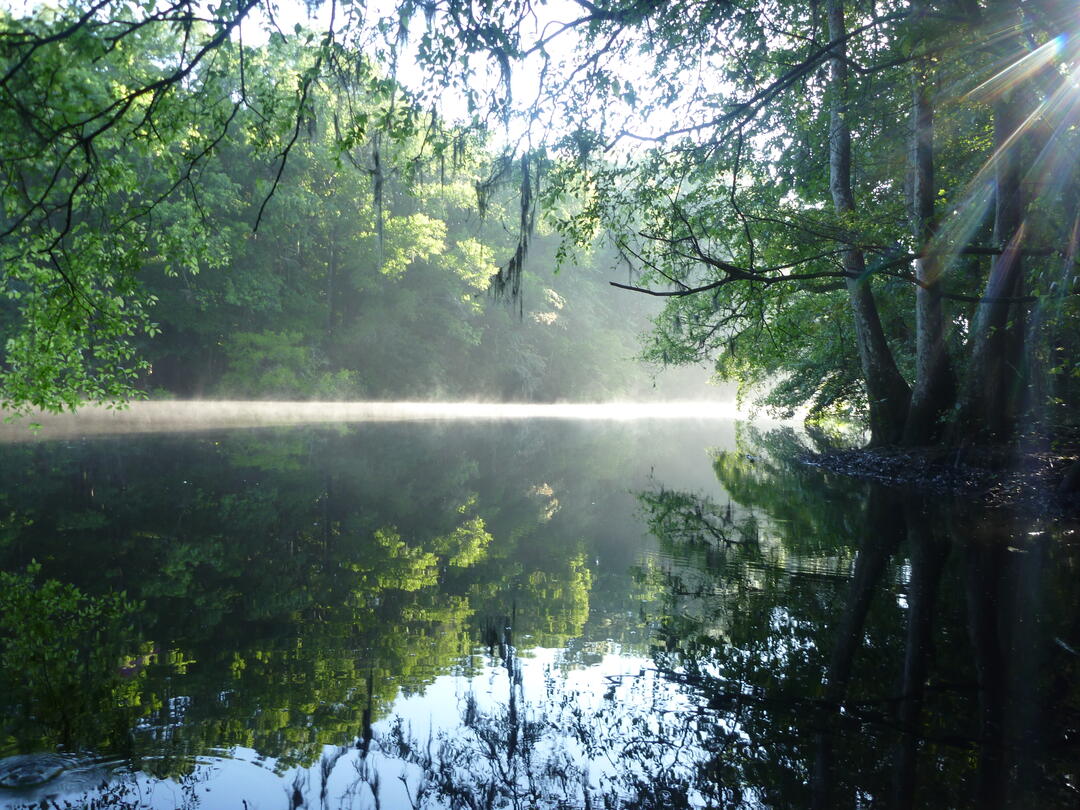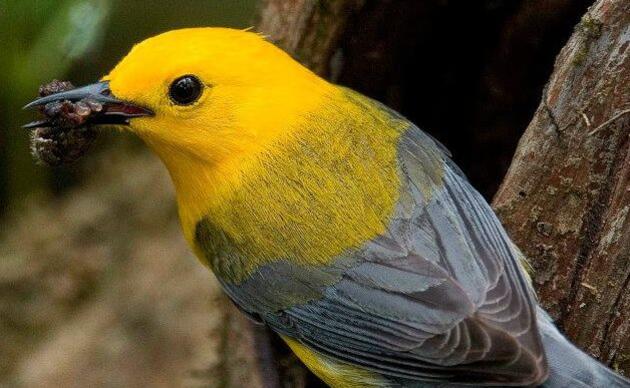Wetlands Mitigation
Wetlands provide incredibly vital habitat. They also clean and filter water, and store floodwater so that it doesn’t overwhelm communities downstream. Sometimes filling wetlands can’t be avoided. When that happens, federal law requires protection and/or restoration of wetlands elsewhere to mitigate the damage.
Over the years, Audubon South Carolina has protected nearly 7,000 acres of wetlands using federal mitigation funds. Soon we’ll be designated an official “umbrella mitigation bank” – which means a steady flow of cash to protect and/or restore wetlands that provide habitat for some of our state’s most vulnerable birds.
We’ll start with 770 acres at Beidler Forest that were ditched and drained years ago, then turned into a minimally productive, marginally valuable tree farm. When we restore the natural hydrology, Prothonotary Warblers, Wood Ducks, Swallowtail Kites, Northern Waterthrushes, Belted Kingfishers, and other birds should return.
Around the restored wetlands we’ll plant native longleaf pine and allow native hardwoods to regenerate. Some of the birds that should return here include Swainson's Warblers, Red-cockaded Woodpeckers, Brown-headed Nuthatches, Pine Warblers, and Northern Bobwhites.
The 770 acres at Beidler Forest is just a starting point. We’re thrilled to be able to tap into significant, continuous funding to protect and restore some of the most important bird habitat in the state.
Watershed Conservation
Want a clean river? Try protecting the land around it. A natural landscape automatically filters out industrial discharge, agricultural runoff, and other contaminants.
Want an exceptionally clean river? Try protecting an entire watershed.
"Watershed-level conservation" is what we've been up to at Beidler Forest for more than 40 years. We now own 18,000 acres, and we've helped neighbors safeguard an additional 25,000 acres. That translates into protection for 30 miles of a 34-mile floodplain.
The benefits, of course, flow downstream. Clean Edisto River water helps keep the ACE Basin biologically vital, and also supplies clean drinking water to homes and businesses in the Charleston area. Meanwhile, wetlands we're restoring at Beidler absorb excess water during storms, which prevents flooding downstream.
Watershed-level conservation is a success at Beidler Forest. At Silver Bluff, protection of our 3,300 acres fits into a larger effort involving multiple conservation groups, county and municipal utilities, and the whole Savannah River basin. The beneficiaries there are more than a million people who depend on the mighty Savannah for their drinking water.
How you can help, right now
Boardwalk Tickets
We're open Wednesdays thru Saturdays 9 AM to 5 PM and
Sundays 11 AM to 4 PM.
Beidler Membership
Click here to purchase a membership, which provides free admission for a year and other benefits. We offer both Individual and Family Memberships.
Donate to Beidler Forest
If you wish to support us, please consider donating. 100% of your donation goes back into Beidler Forest.





